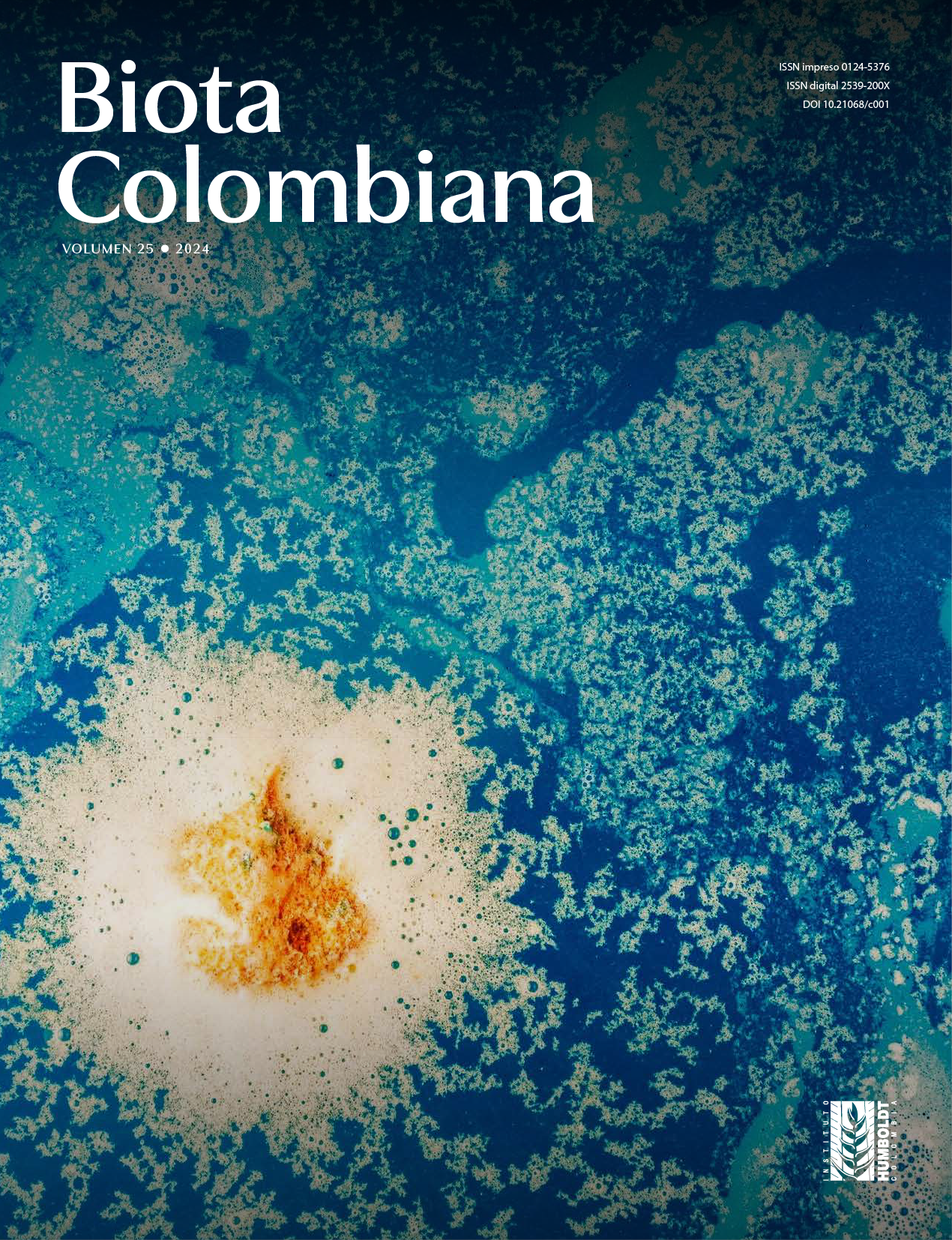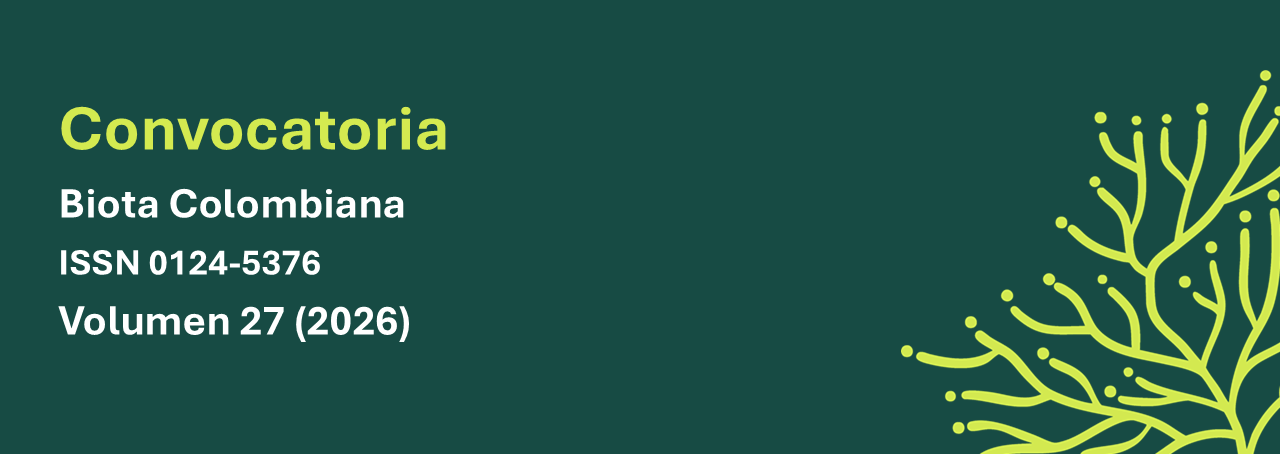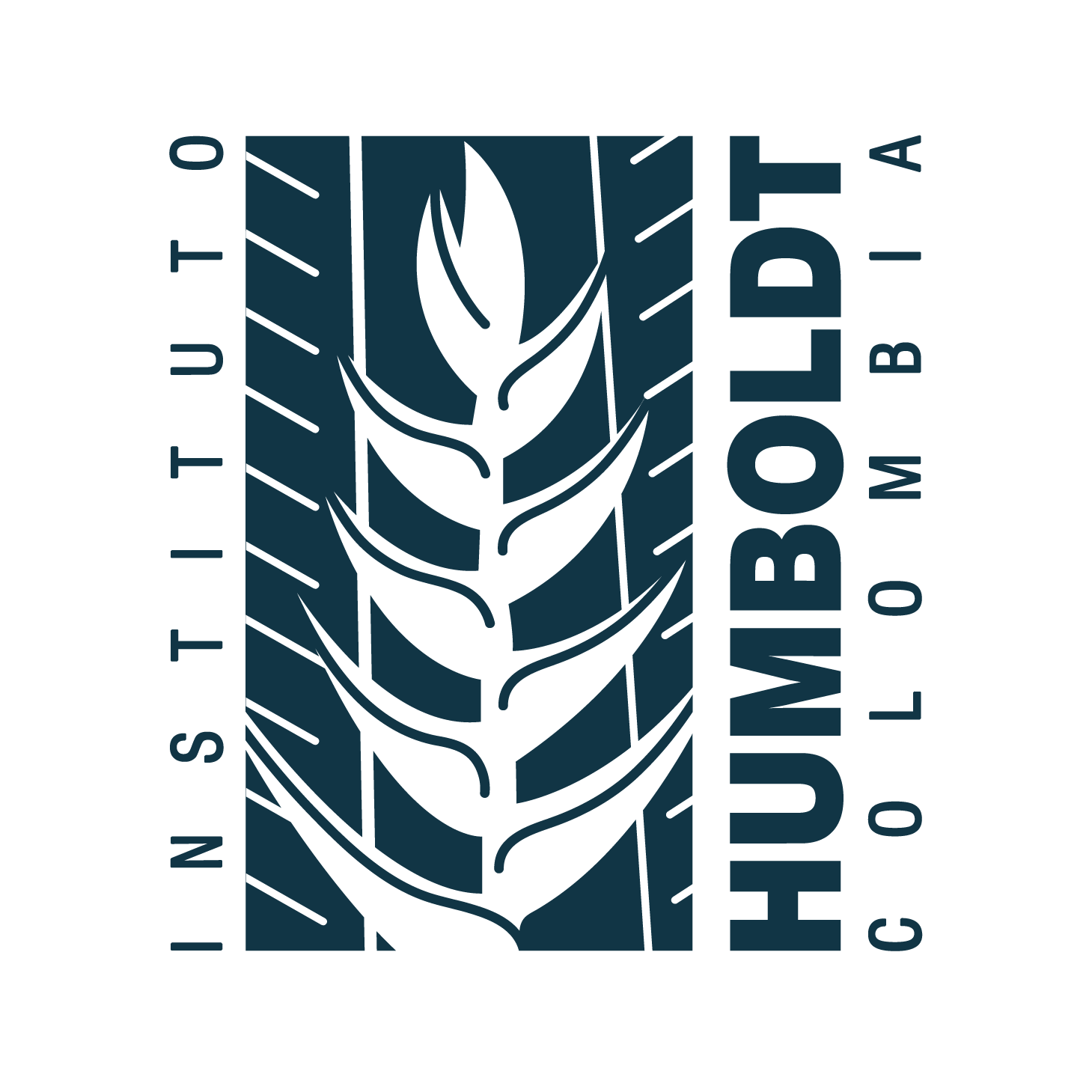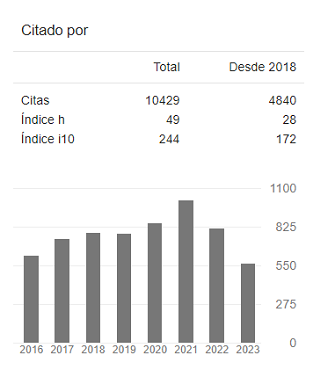Recibido: 8 de septiembre de 2023; Aceptado: 15 de noviembre de 2023; : 15 de marzo de 2024
Resumen
Comparar rasgos en la estructura anatómica de la madera en especies de bosque seco tropical (BST) permite conocer su adaptación a situaciones de sequía en ecosistemas frágiles y fragmentados, incluso con condiciones ambientales contrastantes. Se seleccionaron sitios en el interior y el borde de un BST, con presencia de las especies Astronium graveolens Jacq. y Bursera simaruba (L.) Sarg. Se obtuvieron núcleos de madera por sitio y especie y con microtomías se midió diámetro y número de poros, ancho, largo y número de radios y diámetro de punteaduras. Se tomó humedad y temperatura del ambiente, y humedad del suelo. Finalmente, se realizó ANOVA, ACP, correlación de Pearson e índices de Plasticidad fenotípica (PPI), Variabilidad fenotípica (PVI) y Vulnerabilidad (VI). Se obtuvieron diferencias (P < 0,05) para A. graveolens en ancho y largo de radios, para B. simaruba en número y largo de radios. El PPI (> 0,50) para ambas especies, en el número de poros, refleja su adaptación a las condiciones climáticas. Las diferencias en los radios para ambas especies indica la adaptación anatómica en el almacenamiento de sustancias sintetizadas, situación que influye en la sobrevivencia de las especies cuando presentan déficit hídrico, acudiendo a esta reserva para evitar la deshidratación irreversible.
Palabras clave:
borde del bosque, fitoecología, humedad del suelo, sequía, temperatura ambiental.Abstract
Comparing traits in the anatomical structure of wood in tropical dry forest (BST) species allows us to know their adaptation to droughts in fragile and fragmented ecosystems, even with contrasting environmental conditions. Sites were selected in the interior and edge of a BST, with the presence of the species Astronium graveolens Jacq. and Bursera simaruba (L.) Sarg. Wood cores were obtained by site and species, and the following were measured with microtomies: diameter and number of pores, width, length and number of rays and diameter of pits. Humidity and temperature of the environment and soil humidity were taken. Finally, ANOVA, PCA, Pearson correlation and indices of phenotypic plasticity (PPI), phenotypic variability (PVI) and vulnerability (VI) were performed. Differences (P < 0.05) were obtained for A. graveolens in width and length of rays, for B. simaruba in number and length of rays. The PPI (> 0.50) for both species in number of pores reflects their adaptation to climatic conditions. The differences in the rays for both species indicate the anatomical adaptation in the storage of synthesized substances, a situation that influences the survival of the species when they present water deficit, resorting to this reserve to avoid irreversible dehydration.
Keywords:
ambient temperature, drought, forest edge, phytoecology, soil moisture.Introducción
El bosque seco tropical (BST) es un ecosistema de gran particularidad biológica, dados los altos niveles de endemismos y las restricciones de tipo climático a las que están sometidas las plantas (González et al., 2018). A su vez, es un ecosistema muy frágil que soporta largas temporadas de sequía y pocas precipitaciones durante el año (Moncada et al., 2021). Estas condiciones se vuelven aún más adversas cuando se intensifica el fenómeno del Niño-Oscilación del Sur (ENSO).
Este estudio pretende aportar conocimiento del BST a partir del análisis de los rasgos funcionales en la madera de Astronium graveolens Jacq. y Bursera simaruba (L.) Sarg. Estos rasgos son la principal característica a nivel de procesos y funcionalidad de un ecosistema, ya que permiten entender cómo se adaptan las plantas a condiciones ambientales cambiantes con gran intervención antrópica y cómo algunas de las especies pueden llegar a no adaptarse a las alteraciones microclimáticas generadas.
Existen estudios de rasgos funcionales en bosque seco asociados al soporte mecánico de algunas de las especies presentes y dominantes, y en menor medida, sobre rasgos asociados a la conducción hidráulica (López et al., 2020). En este sentido, resulta de interés conocer los factores que generan estrés hídrico en las plantas y cómo estas se adaptan, teniendo en cuenta la estructura anatómica en la madera (Beeckman, 2016).
El tejido leñoso es importante para el almacenamiento y conducción de agua del suelo a las ramas y hojas, el transporte de nutrientes, carbohidratos y compuestos químicos secundarios defensivos, y el soporte mecánico para que las ramas se suspendan y puedan realizar los procesos fotosintéticos (López et al., 2020). Según Baas et al. (2016), el estudio de las características anatómicas del tallo ayuda a entender cómo cambian los atributos de diferentes rasgos funcionales hidráulicos en función de aspectos meteorológicos como la disponibilidad de agua en un determinado ecosistema. Esto significa que para conocer aquellas condiciones ambientales que pueden convertirse en factores limitantes del desarrollo de las plantas -la humedad del suelo, temperatura y humedad del ambiente (González et al., 2021)- es posible acudir al estudio de los rasgos funcionales hidráulicos de la madera, analizando ambientes contrastantes relacionados con la disponibilidad de agua (Salgado, 2015). Estos contrastes pueden estar presentes en un mismo ecosistema cuando hay alteraciones antrópicas que afectan el microclima.
Una de estas condiciones climáticas cambiantes es el efecto borde. Según Becerril et al. (2005) y Ostertag et al. (2015), existen tres tipos de efecto de borde: abiótico, biológico directo y biológico indirecto. El primero hace referencia a cambios ambientales como la temperatura, humedad del suelo y del ambiente, mayor luminosidad y fuerza de los vientos. El segundo se refiere a los cambios de la vegetación dominante del bosque que dependen de las alteraciones en las condiciones ambientales. Por último, los factores biológicos indirectos se asocian a las modificaciones en los procesos ecológicos planta-suelo.
Para este estudio se tienen en cuenta las diferencias de temperatura y humedad ambiental en el interior y borde de un relicto de bosque; condiciones microclimáticas que exponen a las plantas a modificaciones anatómicas en su tejido leñoso debido al estrés hídrico (Da Costa et al., 2020). El objetivo es conocer las respuestas de las plantas con respecto a la conductividad y eficiencia hidráulica de la madera bajo diferentes condiciones ambientales. La información recopilada por González et al. (2021) sugiere que las plantas modifican parte de su anatomía -p. ej., los conductos xilemáticos, paredes celulares, fibras y hojas-, procurando garantizar su conductividad hidráulica y no ser afectadas por cavitación.
El estudio se realizó en un BST del municipio de Enciso (Santander) con el objetivo de determinar la variación de diámetro de poros, número de poros por mm2, longitud de radios, ancho de radios, número de radios por mm2 y diámetro de punteaduras, en dos especies dominantes (A. graveolens y B. simaruba) en el borde y el interior del bosque. Estas variables se correlacionaron con las condiciones ambientales (humedad relativa y temperatura) y humedad del suelo para analizar su influencia sobre la adaptación del tejido xilemático.
Como hipótesis, se sugiere que las variables ambientales (humedad relativa, temperatura relativa y humedad del suelo) intervienen por lo menos en una de las variables anatómicas (diámetro de poros, número de poros por mm2, longitud de radios, ancho de radios, número de radios por mm2 y diámetro de punteaduras) en las dos especies estudiadas.
Materiales y métodos
Área de estudio y selección de especies
El estudio se realizó en un BST con coordenadas 06°36’35,2’’N-72°42’25,5’’O, localizado en el municipio de Enciso, departamento de Santander, Colombia (Figura 1). Este ecosistema se caracteriza por tener temperaturas entre los 26 y 38 °C y precipitación promedio de 1300 mm anuales. Las especies seleccionadas fueron aquellas que presentaron mayor índice de importancia (IVI), según el estudio elaborado por Rosales y Jaimes (2019): Astronium graveolens Jacq. y Bursera simaruba (L.) Sarg.
Toma de muestras de la madera
Se realizó un muestreo al azar y se tomaron dos núcleos de madera por árbol en tres individuos para la especie A. graveolens, tanto en interior como en el borde del bosque. Así mismo se tomaron dos núcleos de madera por árbol en cuatro individuos para la especie B. simaruba, tanto en interior como en borde del bosque, para un total de siete árboles analizados. Esto se hizo con un barrenador de Pressler (0,5 cm de diámetro), evitando la madera de compresión y reacción, a una altura del árbol que oscilo entre 1,2 y 1,4 m, teniendo en cuenta las partes rectas del fuste, donde se obtuvieron núcleos de madera a la medida de la longitud de la albura. Posteriormente, se almacenaron en una mezcla de agua destilada y formol al 0,1 % en bolsas de plástico herméticas, evitando la proliferación de hongos. Este procedimiento se hizo según el protocolo establecido por Chave (2005). La extracción de los núcleos de madera se realizó con una mezcla de 250 ml de agua (H2O), 2,5 g de oxicloruro de cobre (Cu2(OH)3Cl) y 250 g de cal (CaO) para cicatrizar.
Figura 1: Área de estudio y localización de los individuos.
Toma de datos factores ambientales
Se realizaron mediciones de temperatura y humedad relativa del ambiente y del suelo, tanto en el interior como en el borde del bosque. Para las variables ambientales, se utilizó un termohigrómetro con el que se hicieron mediciones semanales durante cuatro meses. La humedad del suelo se realizó mediante la técnica volumétrica de Jaramillo (2002), usando seis cilindros de 169,6 cm3. Las muestras en campo se llevaron a laboratorio para tomar peso húmedo y secar en un horno durante 48 horas a 105 °C y pesar nuevamente para posterior cálculo. Se tomaron muestras de suelo de interior y borde del bosque, con tres réplicas semanales, durante un mes y medio, y se consiguieron resultados a través de la siguiente expresión:
θ % = humedad volumétrica, Psh = peso suelo húmedo (g), Pss = peso suelo seco (g), Da = densidad aparente (g/cm3).
Unidades de medida de los rasgos funcionales
Diámetro de poros (Dips): está asociado a la eficiencia en la conducción hidráulica. Es medido en micras (µm).
Número de poros (Np): se asocia con la seguridad y eficiencia en la conducción hidráulica. Su conteo se realiza por mm2 de acuerdo con Lindordf (1994).
Diámetro de punteaduras (Dipt): asociado a la eficiencia en la conducción hidráulica y el transporte de agua (procesos de cavitación). Se mide en micras (µm).
Número de radios (Nr): se relaciona con el transporte radial y almacenamiento de hidratos de carbono. Su conteo se realiza por mm2. El ancho de radios (Ar) y la longitud de radios (Lr) se relacionan con la misma función y son medidos en micras (µm) de acuerdo con Schmid (1987).
Preparación de microtomías
El corte de los núcleos de madera se realizó en los planos tangencial y transversal con un micrótomo rotatorio YD315. Para el caso de A. graveolens, los núcleos se introdujeron en ácido nítrico en concentración de 65 % durante 7 horas para facilitar su corte.
Las microtomías se lavaron con alcohol en dos concentraciones, una de 50 % y otra al 96 %. Posteriormente, se realizó la tinción de los tejidos con safranina (1 %), seguido de una inmersión en xilol y por último se realizaron los montajes en la laminilla de acuerdo con la metodología propuesta por Jansen et al. (1998). Para pegar las laminillas, se utilizó un adhesivo eukit y se etiquetó cada microtomía. Luego, se procedió con la observación y toma de fotografías con microscopio binocular marca Zeiss, modelo Axio Lab 5. Con el software Zen se realizó la medición de diámetro de poros (Dips) en micras (µm), número de poros (Np) por mm2, diámetro de punteaduras (Dipt) en micras (µm), número de radios (Nr) por mm2, ancho de radios (Ar) y longitud de radios (Lr) en micras (µm).
Índices de plasticidad, variabilidad y vulnerabilidad
Los índices de variabilidad y plasticidad fenotípica se realizaron para cada variable anatómica de las especies, con el fin de analizar las modificaciones que pueden ocurrir para que estas se adapten al déficit hídrico. Estos índices se determinaron mediante las siguientes fórmulas utilizadas por Da Costa et al. (2020):
PVI = índice de variabilidad fenotípica, Max = valor máximo, Min = valor mínimo.
PPI = índice de plasticidad fenotípica, M = valor medio máximo, m = valor medio mínimo.
El índice de vulnerabilidad asocia el diámetro de poros con la frecuencia de poros. Este índice muestra el grado de vulnerabilidad de cavitación en los poros a la que se exponen las plantas cuando se presenta un estrés hídrico, y se determinó mediante la fórmula utilizada por Da Costa et al. (2020):
VI = índice de vulnerabilidad, x VD = promedio diámetro de poros, 𝑥 𝑉𝐹 = promedio frecuencia de poros.
Análisis estadístico
Se realizó un análisis de componentes principales (ACP) y se generó una gráfica que permitió entender visualmente las relaciones entre las variables anatómicas de la madera (diámetro de poros, número de poros, diámetro de punteaduras, número de radios, ancho de radios y longitud de radios) y las variables ambientales (humedad, temperatura del ambiente y humedad del suelo). Esto se realizó en Rstudio, empleando los paquetes FactoMiner, Factoextra, ggplot2 y ggrepel. El coeficiente de correlación de Pearson se utilizó para medir el grado de relación lineal entre cada una de las variables ambientales con las variables anatómicas (Borcard et al., 2011).
Para analizar el efecto de borde en los rasgos funcionales de la madera, se establecieron dos hipótesis:
H0: las variables ambientales (humedad relativa, temperatura relativa y humedad del suelo) no presentan influencia en ninguna de las medias de las variables anatómicas de la madera (diámetro de poros, número de poros, diámetro de punteaduras, número de radios, ancho de radios y longitud de radios) del interior y borde del bosque.
H1: Hay influencia de las variables ambientales en alguna de las medias de las variables anatómicas.
Se determinó la normalidad de los datos en cada una de las variables mediante la prueba de Shapiro-Wilk. Al resultar normales, se realizó la prueba de homogeneidad de la varianza de Levene. Posteriormente, se ejecutó un análisis de varianza (ANOVA) para aquellas variables que cumplen con los supuestos de las pruebas. Una vez determinada la existencia de diferencias entre los sitios (interior y borde), se aplicó la prueba post-hoc de Tukey. Esta prueba permitió crear intervalos y mostrar las diferencias significativas entre dos localizaciones para cada variable con un 95 % de confiabilidad. Para las variables que no cumplieron con los supuestos de normalidad y homogeneidad, se realizó una prueba no paramétrica de Kruskal-Wallis, que permitió realizar un análisis de varianza unidireccional sin tener en cuenta la agrupación de los datos. Para las variables no paramétricas que presentaron diferencias significativas, se aplicó la prueba de los rangos con signo de Wilcoxon, con el fin de comparar las variables de las dos localizaciones y determinar si presentan diferencias significativas (Dalgaard, 2008).
Resultados
Comportamiento de los datos ambientales
Las variables ambientales resultaron ser contrastantes en el interior y el borde del bosque: la humedad del ambiente en el interior del bosque es mayor (46,7 %) respecto al borde (43,2 %), la humedad del suelo también es mayor en el interior (12,9 %) comparada con el borde (10,1 %) y la temperatura del suelo es mayor en el borde (31,5 °C) en comparación al interior (31,3 °C) (Figura 2).
En la Figura 3, el análisis de componentes principales (ACP) muestra en sus dos componentes una explicación de la varianza total del 70,53 %; el componente PC1 explica el 49,2 % de esta varianza. Se observa que las variables humedad del ambiente, diámetro de punteaduras, diámetro de poros, longitud y ancho de radios, son las que aportan a la variación de este componente de forma positiva. Para el componente PC2, que expresa el 21,93 %, las variables que más aportan a esta variación son número de radios, número de poros, humedad del suelo y temperatura ambiente. Por otra parte, se observa que la temperatura ambiente y humedad del suelo están estrechamente relacionados con el número de poros. Ancho de radios y diámetro de punteaduras están relacionadas entre sí.
En la Figura 3, el ACP evidenció que el número de poros por mm2 tiene una alta relación con la temperatura ambiente y humedad del suelo.
Este análisis de componentes principales comprueba que el ancho de radios es inversamente proporcional al número de radios. En otras palabras, a medida que aumenta el número de radios por mm2, el ancho disminuye. Por ejemplo, al interior, B. simaruba registró valores promedio de 12 radios con ancho de 67,33 µm, y en el borde, valores promedio de 15 radios con ancho de 60,89 µm. Para el caso del A. graveolens, en el interior del bosque se registraron valores promedio para un número de radios de 38 con un ancho de 47,41 µm, y en el borde, 35 radios con un ancho promedio de 40,7 µm.
El coeficiente de correlación de Pearson (Tabla 1) muestra que el diámetro de poros (Dips), tiene una correlación negativa con la humedad del suelo, es decir, al disminuir la humedad en el suelo, aumenta la porosidad y disminuye el diámetro de poros. La relación más fuerte se corrobora con el coeficiente de Pearson (Tabla 2), que relaciona el número de poros y la temperatura ambiente, siendo esta directamente proporcional en la especie de A. graveolens. Sin embargo, la temperatura ambiente es inversamente proporcional a la humedad. Por otra parte, se observa que la temperatura ambiente y la humedad del suelo están estrechamente relacionadas.
Finalmente, para la especie A. graveolens (Tabla 2), las variables que presentaron diferencias notables fueron número de radios por mm2, longitud y ancho de radios, pues se evidenció que la cantidad de radios disminuye a medida que son más anchos y largos.
Efecto de borde en los rasgos funcionales de la madera
Según el ANOVA (Tabla 3) para la especie B. simaruba, las variables número de radios por mm2 y longitud de radios mostraron diferencias significativas. Esta última también presentó diferencias en A. graveolens. Así mismo, en la correlación del coeficiente de Pearson (Tabla 2), la variable número de radios es inversamente proporcional a la humedad del ambiente. Es decir, entre mayor humedad presente el ambiente, la cantidad de radios disminuye. La longitud de radios, por el contrario, es directamente proporcional a la humedad del ambiente, indicando que ambas variables aumentan o disminuyen en un mismo sentido.
En cuanto al número de poros para cada especie, A. graveolens presentó un promedio de 16 poros por mm2 para el interior y de 15 poros por mm2 para el borde, mostrando un atributo poco plástico. Por otro lado, B. simaruba registró un promedio de 33 poros por mm2 para interior y 36 poros por mm2 para el borde, evidenciando una mayor adaptabilidad.
La Tabla 4 muestra la relación inter e intraespecífica de las especies según su localización en el bosque, a partir de la prueba de Tukey. En las relaciones intraespecíficas, la especie de A. graveolens presenta diferencia en las variables ancho de radios (Ar) con una significancia de 0,01, donde se tiene que en el interior del bosque (I) el ancho promedio de los radios es de 47,41 µm y en el borde de 40,7 µm. La longitud de radios (Lr) presentó diferencias con un valor de 0,001, donde el interior mostró un valor promedio de 276,21 µm y el borde (B) un valor de 324,13 µm. En B. simaruba, las variables que tienen diferencias son número de radios (Nr), con una significancia de 0,001, donde el interior presentó 12 radios por mm2, y el borde, 15. Para el caso de la longitud de radios, la significancia fue de 0,01, donde el interior del bosque obtuvo un valor promedio de 404,09 µm y el borde un valor de 345,63 µm.
Las relaciones interespecíficas de las especies B. simaruba interior versus A. graveolens borde presentaron diferencias significativas en las variables longitud de radios, con un valor de 0,001, y diámetro de punteaduras, con valor de 0,01. Para el caso de B. simaruba borde versus A. graveolens interior existen diferencias significativas en la variable longitud de radios con valor de 0,001. Finalmente, la relación B. simaruba interior versus A. graveolens interior tiene un alto grado de significancia en longitud de radios con un valor de 0,0001.
En la Figura 4A se observan los poros en el corte transversal de A. graveolens, de interior y de borde del bosque. Estos no presentan diferencias para diámetro de poros (p = 0,679) ni número de poros (p = 0,652). De igual manera, en la Figura 4B para B. simaruba, el diámetro de poros (p = 0,386) y número de poros (p = 0,504) no presentan diferencias. En la Figura 4C se muestran los radios en el corte tangencial de interior y borde del bosque de la especie A. graveolens, con diferencias en las variables número (p = 0,040), longitud (p = 0,003) y ancho de radios (p = 0,032). En la Figura 4D la especie B. simaruba presenta diferencias en las variables número (p = 0,001) y longitud de radios (p = 0,013). Para el caso de la Figura 4E, A. graveolens no mostró diferencias en el diámetro de punteaduras (p = 0,128) y en la Figura 4F B. simaruba tampoco presentó diferencias en el diámetro de punteaduras (p = 0,441) en interior y borde del bosque.
Para el caso de ambas especies, las punteaduras que se presentan son alternas, sin diferencias en interior y borde del bosque. Los diámetros de las punteaduras se deben al grupo taxonómico al que pertenecen. Es así que A. graveolens presentó un diámetro de punteaduras en promedio de 8,04 µm para interior y de 7,59 µm para borde. Por su parte, B. simaruba, tuvo valores de 8,89 µm para el interior y de 8,55 µm para el borde.
Figura 2: Dispersión de los datos ambientales.
Figura 3: Análisis de componentes principales por especie y localización.
Notas. (*) = alta correlación. El coeficiente de correlación de Pearson toma valores entre -1 y 1, indicando que existe una asociación matemática lineal perfecta, positiva o negativa, entre las dos variables. Las correlaciones iguales a cero indican ausencia de asociación (Borcard et al., 2011).
Tabla 1: Coeficiente de correlación de Pearson para B. simaruba.
Variables
Diámetro de poros (µm)
N.° de poros por mm2
N.° de radios por mm2
Ancho de radios (µm)
Longitud de radios (µm)
Diámetro de punteaduras (µm)
Temperatura ambiente (°C)
0,071
0,092
0,354
-0,664
-0,372
0,527
Humedad ambiente (%)
0,319
-0,024
-0,875*
0,527
0,776*
0,132
Humedad del suelo (%)
-0,875*
0,463
0,432
-0,151
-0,388
0,141
Notas. (*) = alta correlación.
Tabla 2: Coeficiente de correlación de Pearson para A. graveolens.
Variables
Diámetro de poros (µm)
N.° de poros por mm2
N.° de radios por mm2
Ancho de radios (µm)
Longitud de radios (µm)
Diámetro de punteaduras (µm)
Temperatura ambiente (°C)
-0,462
0,707*
-0,092
0,351
-0,028
-0,151
Humedad ambiente (%)
0,335
-0,758*
0,158
-0,196
0,044
0,112
Humedad del suelo (%)
0,099
0,422
0,454
0,058
-0,380
0,206
Notas. (-) = variable no normal, (*) = 0,01 de significancia, (**) = 0,001 de significancia, σ = desviación estándar.
Tabla 3: Análisis de varianza (ANOVA), tendencia central y dispersión de los datos.
Variables
Pr (>F) B. simaruba
Pr (>F) A. graveolens
A. graveolens interior
A. graveolens borde
B. simaruba interior
B. simaruba borde
Media
σ
Media
σ
Media
σ
Media
σ
Diámetro de poros (µm)
-
0,679
73,8
14,9
73,1
14,1
84,3
14,2
85,5
14,4
Número de poros por mm2
-
0,652
16,1
1,9
15,4
2,4
35,8
3,3
36,0
3,2
Número de radios por mm2
0,001**
-
35,5
4,2
35,5
3,2
12,9
1,7
13,8
1,6
Ancho de radios (µm)
-
0,032*
44,8
11,7
43,5
10,7
65,4
18,7
62,9
12,8
Longitud de radios (µm)
0,013*
0,003**
288,8
86,2
305,9
81,5
382,6
114,6
370,6
109,9
Diámetro de punteaduras (µm)
0,441
0,128
7,9
0,6
7,8
0,6
8,6
0,7
8,7
0,7
Notas. (-) = variable no normal, (*) = 0,01 de significancia, (**) = 0,001 de significancia, (***) = 0,0001 alto grado de significancia, i = interior, b = borde.
Tabla 4: Prueba de Tukey intra e interespecífica.
Especies
P value Diámetro de poros
P Value N.° de poros
P value N.° de radios
P value Ancho de radios
P value Longitud de radios
P value Diámetro de punteaduras
A. graveolens (i) - A. graveolens (b)
0,679
0,652
-
0,032*
0,003**
0,128
B. simaruba (i) - B. simaruba (b)
-
-
0,001**
-
0,013*
0,441
B. simaruba (b) - A. graveolens (b)
-
-
-
-
0,690
0,080
B. simaruba (i) - A. graveolens (b)
-
-
-
-
0,001**
0,010*
B. simaruba (b) - A. graveolens (i)
-
-
-
-
0,005**
0,590
B. simaruba (i) - A. graveolens (i)
-
-
-
-
0,000***
0,190
Figura 4: Corte transversal y tangencial de las especies B. simaruba y A. graveolens, y variables microscópicas
Figura 5: Índice de variabilidad fenotípica (PVI).
Figura 6: Índice de plasticidad fenotípica (A) e índice de vulnerabilidad (B) para A. graveolens y B. simaruba.
Índices de variabilidad fenotípica
En la Figura 5A se observa el índice de variabilidad fenotípica para las variables anatómicas de la especie B. simaruba según su localización. Los datos revelan mayor diferencia en la variable diámetro de poros (Dips) del borde, con un valor de 0,6, que en el interior del bosque, con un valor de 0,3. Así mismo, la variable longitud de radios (Lr) obtuvo un valor de 0,5 en el borde y de 0,2 en el interior del bosque. La variabilidad fenotípica es mayor en el borde que en el interior del bosque para las variables diámetro de poros (Dips), número de poros (Np) por mm2 y longitud de radios (Lr). Lo contrario sucede para las variables diámetro de punteaduras (Dipt) y ancho de radios (Ar). En contraste, la especie de A. graveolens (Figura 5B) presentó la mayor variabilidad en el diámetro de poros (Dips) de borde con un valor de 0,4 y en el interior del bosque con un valor de 0,2. La variable número de poros (Np) por mm2 tuvo diferencias en el borde con un valor de 0,5 y 0,3 en el interior del bosque, mientras que en la variable ancho de radios (Ar) la diferencia influyó en el interior con un valor de 0,4 y 0,2 para el borde del bosque.
Índice de plasticidad fenotípica y vulnerabilidad
En la Figura 6A, la especie B. simaruba exhibió mayor plasticidad en todas sus variables anatómicas que A. graveolens. Los mayores valores para B. simaruba se registraron en diámetro de poros (Dips), con un valor de 0,606, número de poros (Np), con valor de 0,638, y número de radios (Nr) por mm2, con valor de 0,6. A diferencia de A. graveolens, la variable más plástica fue número de poros por mm2 con un valor de 0,5. La Figura 6B evidencia que la especie B. simaruba es menos vulnerable que A. graveolens, tanto en el interior como en el borde del bosque. La plasticidad fenotípica es mayor en B. simaruba, lo que la hace menos vulnerable y más adaptable a los cambios ambientales, modificando o evolucionando parte de su anatomía leñosa y haciendo que esta sea eficiente en el transporte hidráulico cuando se enfrenta a déficit hídrico.
El índice de plasticidad fenotípica (Figura 6A) es mayor en B. simaruba en todas las variables anatómicas estudiadas. Esto significa que B. simaruba es una especie más plástica y, en consecuencia, con mayor capacidad adaptativa, reflejada en una morfología y fisiología más variable.
Discusión
Los resultados de este estudio demuestran que en la especie B. simaruba las variables número de radios por mm2 y longitud de radios tienen diferencias significativas en el borde e interior del bosque. Por su parte, la correlación del coeficiente de Pearson indica que la variable número de radios es inversamente proporcional a la humedad del ambiente. Es decir, a mayor humedad presente en el ambiente, la cantidad de radios disminuye y su longitud aumenta. También se evidenció que a medida que aumenta el número de radios por mm2 su ancho disminuye. Por ejemplo, B. simaruba de interior registró valores promedio de 12 radios con ancho de 67,33 µm, mientras que en el borde, los valores promedio fueron de 15 radios con ancho de 60,89 µm. El índice de variabilidad fenotípica para esta especie mostró mayor influencia en el borde que en el interior del bosque para las variables diámetro de poros, número de poros por mm2 y longitud de radios.
El índice de plasticidad fenotípica analizado en las variables anatómicas sugiere que estas son más plásticas, lo cual demuestra que B. simaruba se adapta con mayor facilidad en el borde del bosque, pues modifica su estructura anatómica al momento de detectar variaciones en las condiciones ambientales (mayor temperatura, escasez de agua, mayor radicación solar, entre otras), permitiendo que tenga mayor probabilidad de sobrevivencia.
Para la especie A. graveolens, las variables que presentaron diferencias notables en el análisis de correlación fueron número de radios por mm2, longitud y ancho de radios, pues se evidenció que la cantidad de radios disminuye a medida que son más anchos y largos. En el interior del bosque se encontraron valores promedio de 38 radios con un ancho de 47,41 µm, y en el borde, 35 radios con un ancho promedio de 40,7 µm. Esto indica que al estar en el interior del bosque bajo condiciones de mayor humedad la especie puede tener un almacenamiento de agua y nutrientes mayor si los recursos están disponibles. El ACP mostró que el número de poros por mm2 tiene una alta relación con la temperatura ambiente y la humedad del suelo, lo cual garantiza que la planta tenga mayor capacidad de transporte hidráulico, ya que si se presentan embolias o cavitación, el desarrollo de la planta no se verá afectado a nivel fisiológico y morfológico.
Según el índice de variabilidad fenotípica, la especie modifica diámetro de poros, número de poros y longitud de radios en el borde del bosque. Para el caso del interior del bosque, la modificación se presenta en el diámetro de punteaduras, ancho y número de radios. El análisis de la plasticidad fenotípica de A. graveolens muestra que es menos plástica y más vulnerable en el borde del bosque que en su interior. Esta vulnerabilidad se da especialmente cuando presenta mayor diámetro de poros y menor cantidad de estos.
Los resultados obtenidos concuerdan con Barajas (1985), Garzón y Salinas (2017) y González et al. (2021), quienes indican que el número de radios es mayor en especies presentes en sitios de alta sequía y poca precipitación. También explican que la longitud y ancho de los radios aumentan a medida que disminuye su número. De esta manera, adquieren mayor capacidad de almacenamiento y movimiento de líquidos por difusión manteniendo la seguridad hidráulica y amortiguando así la presencia de embolismos en los poros. Según Avakoudjo et al. (2022), las condiciones microclimáticas de un sitio influyen en la cantidad y tamaño de los poros, es decir, al presentarse estrés hídrico, la estructura anatómica de las plantas debe garantizar el abastecimiento de agua en los conductos xilemáticos.
Olson y Rosell (2013) examinaron la relación entre el diámetro del tallo y el diámetro de los vasos en comunidades de vegetación con diferente disponibilidad de humedad, y comprobaron que las especies de zonas áridas presentan vasos más estrechos que los reportados para las especies de zonas húmedas. De acuerdo con los análisis realizados por Apgaua et al. (2017), las diferencias en los poros de especies de zonas áridas y zonas húmedas pueden incluir adaptaciones relacionadas con la eficiencia en el transporte de agua y la resistencia a la sequía. En zonas áridas es común que las plantas presenten vasos más pequeños y densos que ayuden a minimizar la pérdida de agua.
Lo encontrado en este estudio respecto a las variables a las variables diámetro y número poros de B. simaruba coincide con lo reportado por Mahmuda et al. (2019) en bosque seco al sur de Asia, donde el aumento de temperatura genera mayor evapotranspiración, volviendo el ambiente más seco, con ausencia de humedad en el suelo y aumentando la cantidad de poros en la madera. Moglia y López (2001) y González-Muñoz et al. (2018) mencionan que al disminuir la humedad en el suelo aumenta la porosidad y disminuye el diámetro de poros. Esto indica que hay baja eficiencia -pero alta seguridad- en el transporte hidráulico, y así se evita el colapso en los vasos cuando hay presencia de embolias (Schmid, 1987).
Esta investigación también reveló que el índice de plasticidad fenotípica es mayor en B. simaruba en todas las variables anatómicas estudiadas. Esto quiere decir que la especie es más plástica y tiene la habilidad de modificar su estructura anatómica ante las variaciones de los factores ambientales, lo cual le permite sobrevivir en épocas con poca disponibilidad de agua, como lo indicaron Palacio y Rodríguez (2007) y Gianoli (2004).
Por su parte, el índice de vulnerabilidad es mayor en A. graveolens en el borde del bosque que en el interior. Según Da Costa et al. (2020), la vulnerabilidad se presenta cuando las especies poseen menor frecuencia de poros con respecto a su diámetro, ya que un mayor número de poros reduce la vulnerabilidad a la presencia de embolias cuando la planta se halla en condiciones de estrés por sequía. Lachenbruch y Mcculloh (2014), Knipfer et al. (2015) y Morris et al. (2018) mencionan que las dimensiones del diámetro de los poros y la morfología de los vasos son aspectos importantes a considerar en la conductividad hidráulica del xilema. Por ejemplo, los vasos de mayor diámetro y de longitud más corta tiene una mayor conductividad hidráulica, pero son más susceptibles a presentar embolias, creando bloqueos. Por otro lado, vasos más pequeños y largos tiene una menor conductividad hidráulica, pero pueden ser más resistentes a la embolia.
El estudio de los rasgos funcionales anatómicos de las plantas permite entender las especies desde los principales requerimientos de recursos para su comportamiento, modificación de rasgos hidráulicos y anatómicos, y desarrollo. Y esto es particularmente importante al analizar variaciones como las que resultan del efecto borde. Según Becerril et al. (2005) y Ostertag et al. (2015), este efecto puede ser de tipo abiótico, donde los cambios son mediados por condiciones ambientales como temperatura, humedad del suelo y del ambiente, mayor luminosidad y fuerza de los vientos. Este estudio encontró variaciones en la temperatura y humedad del ambiente y humedad del suelo en el borde del bosque, y al hacer el análisis con rasgos hidráulicos, coincidió con variaciones en número de poros y en diámetro, número y ancho de radios. Apgaua et al. (2017) sugieren que las diferencias en los vasos pueden reflejar las estrategias adaptativas de las plantas para sobrevivir en entornos con diferentes niveles de disponibilidad de agua, sin embargo, es importante destacar que se trata de una generalización y que la diversidad de adaptaciones en las plantas es amplia y puede variar según la especie y las condiciones específicas del hábitat, como se señala aquí.
Conclusiones
A partir de la relación entre el número de radios y la humedad del ambiente, se determinó que a medida que aumenta la humedad, el número de radios disminuye, pero, a su vez, estos aumentan en longitud y ancho, con el propósito de almacenar y asegurar el transporte horizontal de sustancias por difusión. Este mecanismo de adaptabilidad permite a las plantas para sobrevivir en ambientes muy secos. Sin embargo, la adaptación de las dos especies observadas es diferente. B. simaruba presentó diferencias solo en número y longitud de radios entre el interior y borde del bosque, mientras que en A. graveolens las diferencias se encontraron adicionalmente en el ancho de radios. Esto es señal de una adaptación anatómica en el almacenamiento de agua en los radios, situación que influye en el desarrollo y sobrevivencia de las especies. Cuando la planta presenta déficit hídrico, acude a esta reserva para evitar la deshidratación irreversible.
La especie B. simaruba demostró mayor plasticidad en todas las variables anatómicas estudiadas en comparación a A. graveolens, condición que la hace menos vulnerable y más adaptable. En el borde del bosque presentó una mayor cantidad de poros por mm2 (36) que en el interior (33). Allí, la humedad del ambiente y del suelo son menores, y la temperatura del ambiente es mayor, lo que indica que, a mayor humedad del ambiente, aumenta el diámetro de poros, pero disminuye su, aumentando el riesgo de que la embolia afecte el desarrollo de la planta.
El estudio de los rasgos funcionales en las plantas ofrece un acercamiento a los comportamientos que estas desarrollan bajo condiciones variantes y que permiten que se adapten y sobrevivan. Conocer este funcionamiento y su relación con las condiciones climáticas es tan importante como entender la trayectoria de un lugar que ha perdido su bosque y quiere ser recuperado, ya que el desempeño interno de las plantas brinda información para seleccionar las especies de acuerdo con su funcionalidad.



















